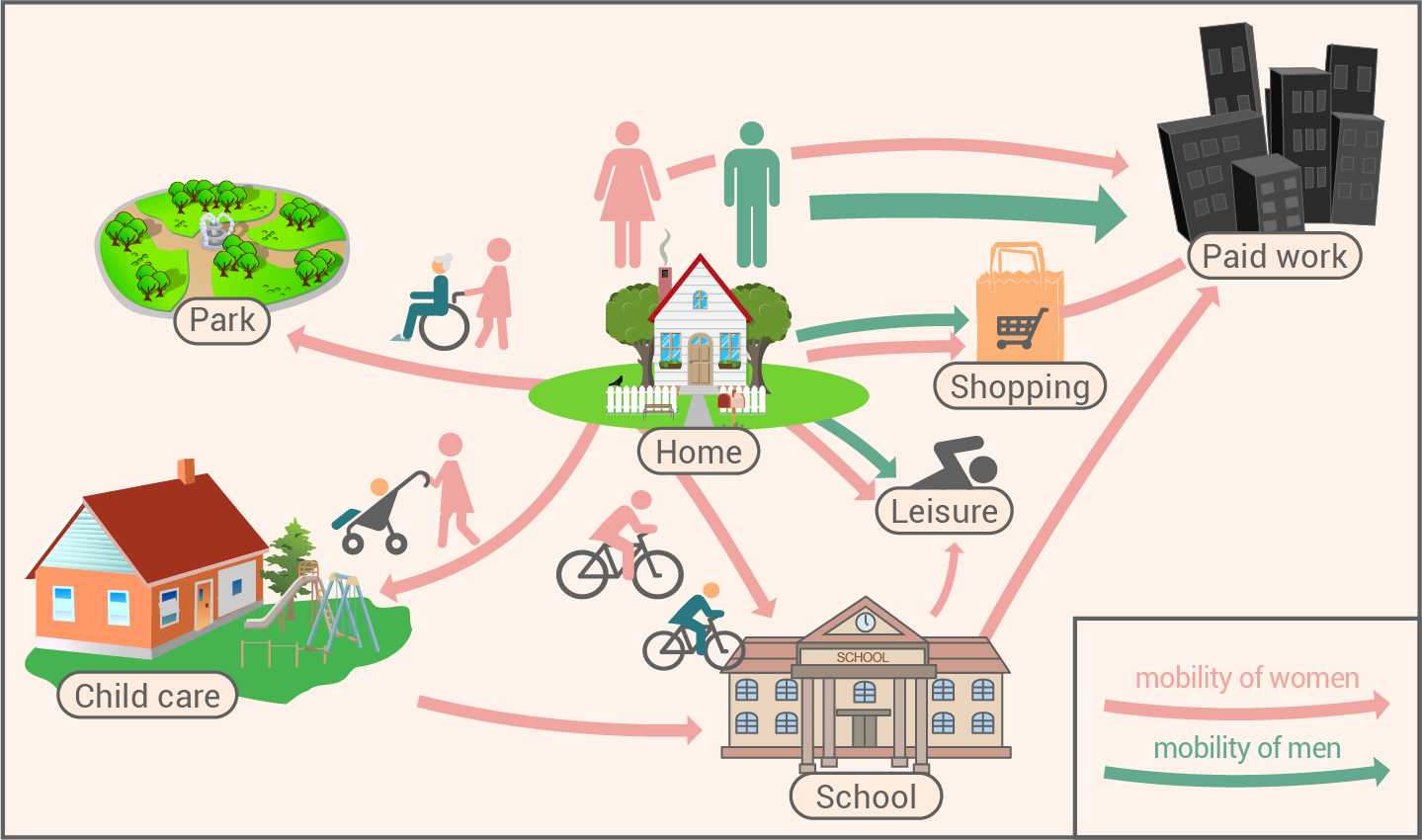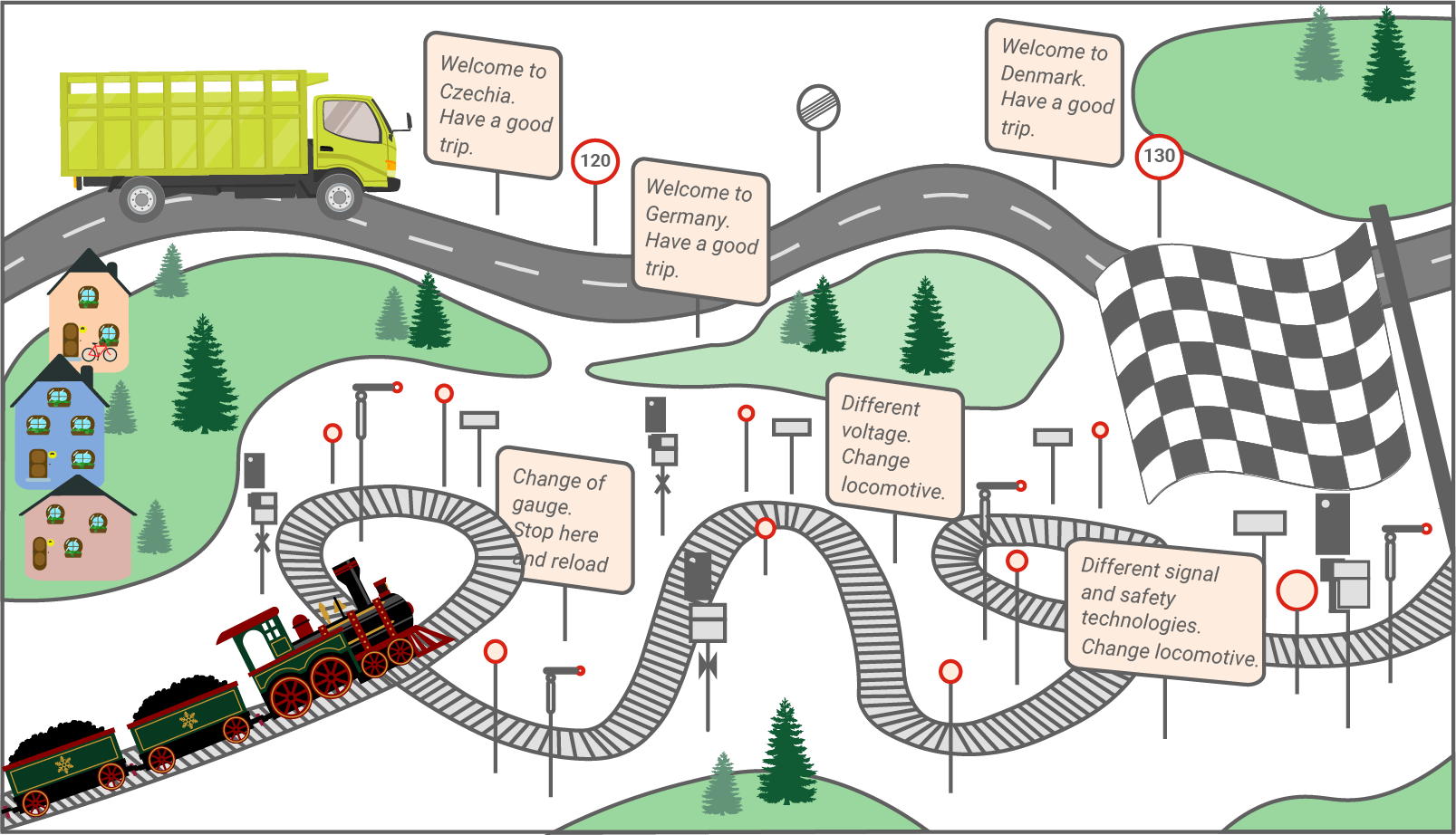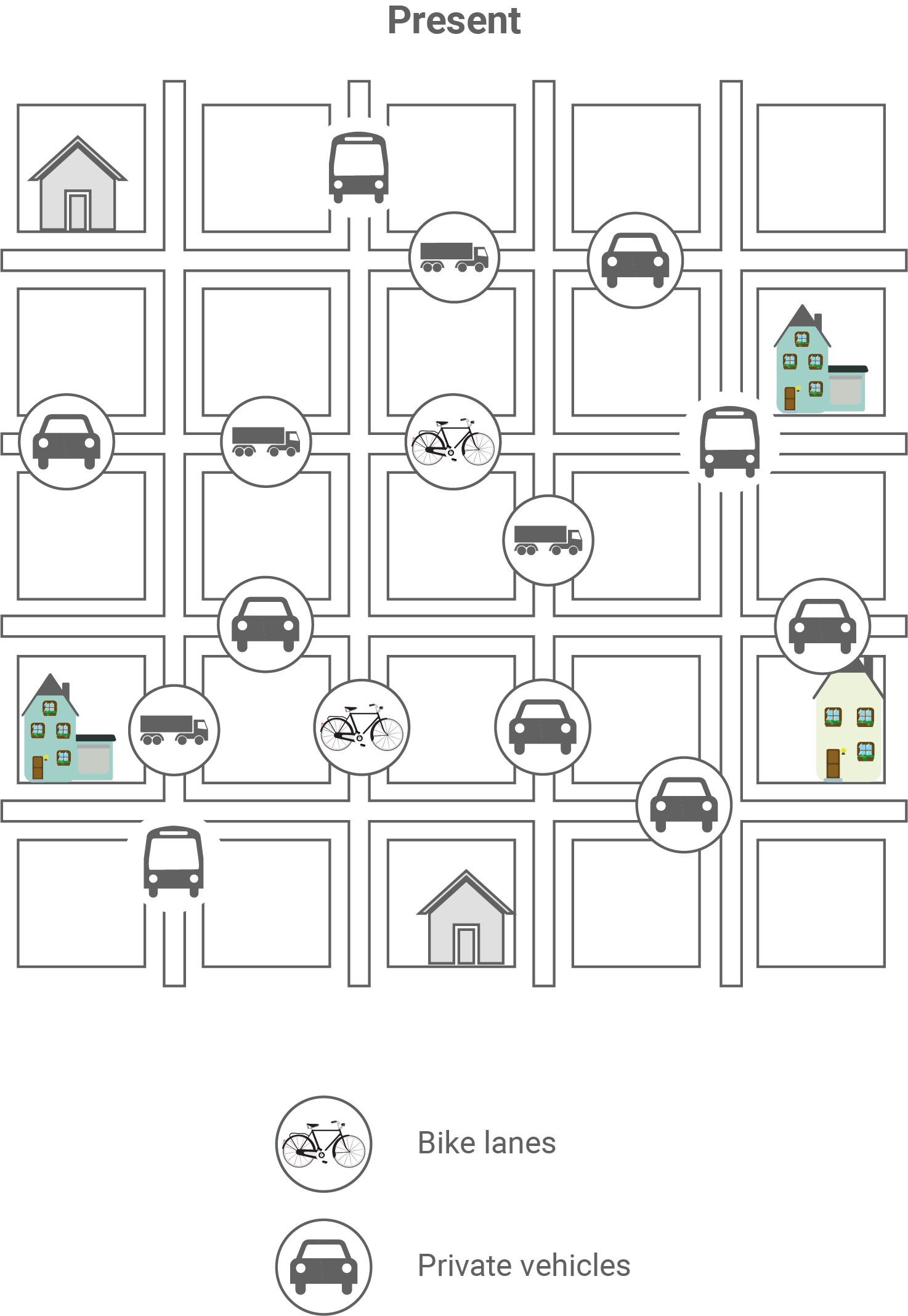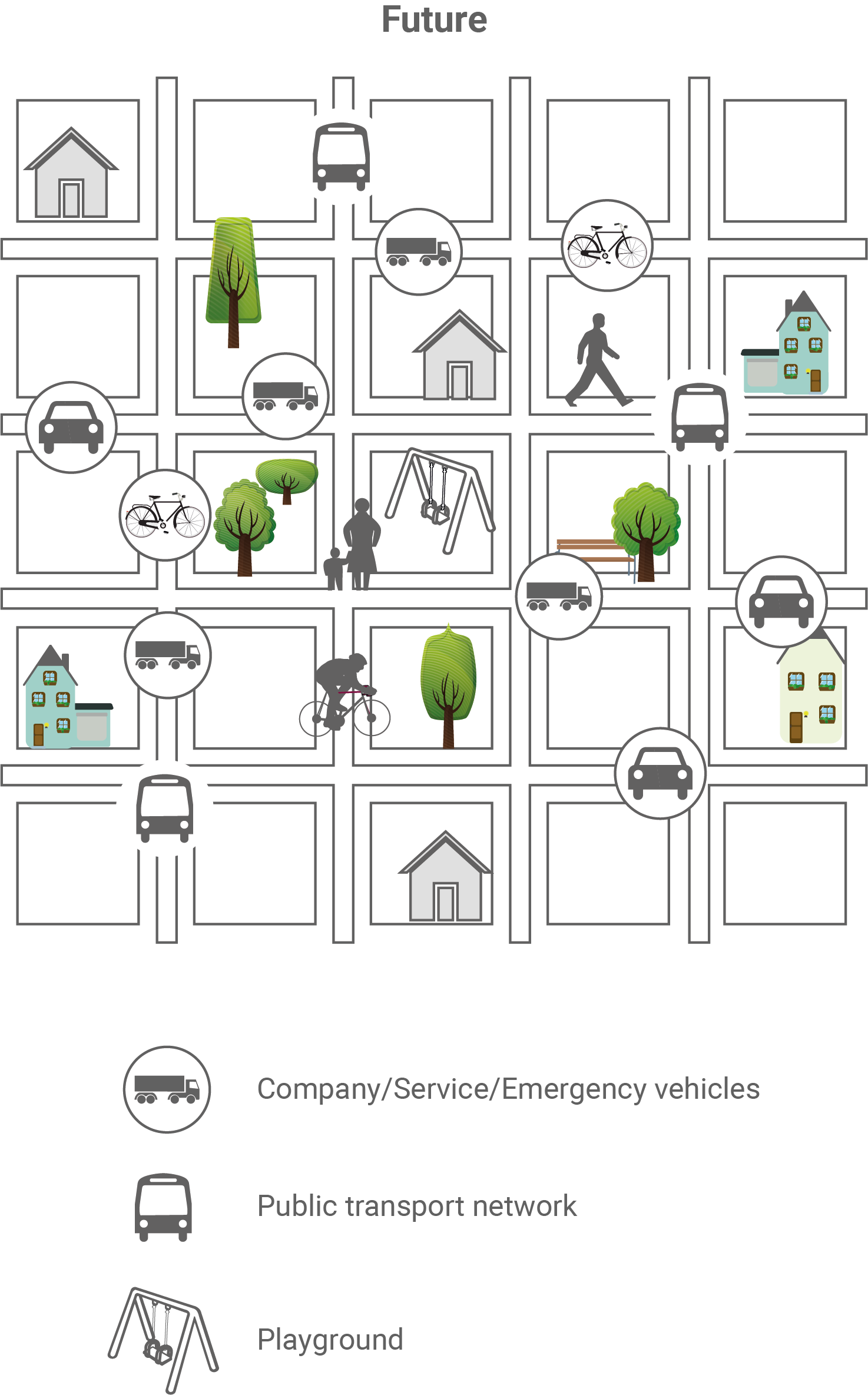Thema 10: Mobility
Prüfling A
The EU has launched a competition entitled "Mobility for all". Entries should propose both creative and realistic regional projects. Comment on the material. Moving from place to place every day
Adapted from: https://eu.boell.org/en/European-Mobility-Atlas [accessed: 22 March 2022]
Prüfling B
The EU has launched a competition entitled "Mobility for all". Entries should propose both creative and realistic regional projects. Comment on the material. Truck vs. goods train - A race under unequal conditions
Adapted from: https:/leu.boell.org/en/European-Mobility-Atlas [accessed: 2 March 2022]
Prüfling C
The EU has launched a competition entitled "Mobility for all". Entries should propose both creative and realistic regional projects. Comment on the material. Making our cities more people-friendly

Weiter lernen mit SchulLV-PLUS!
monatlich kündbarSchulLV-PLUS-Vorteile im ÜberblickDu hast bereits einen Account?
Note:
Please note that these solutions are only suggestions. There are various possibilities for argumentation.
Please note that these solutions are only suggestions. There are various possibilities for argumentation.
- Here we are then.
- Let's talk about possible goals and what to achieve in the next 5 years. How will these goals and ideas open up an endless array of opportunities and at the same time will come with certain constraints.
- Let's start with...
- On the one hand / on the other hand
- It must be considered
- In my opinion / I think, personally, ...
- I agree / I disagree
Possible introductions to the topic and the argumentations
Prüfungsteilnehmer A
- the image depicting women commuting between multiple places, including the park, child care, school, leisure activities, shopping, and paid work
- while men primarily travel between home, work, shopping, and leisure, sheds light on gender differences in mobility patterns
- the material suggests that women often have more diverse mobility needs, involving multiple destinations beyond work
- when planning regional projects, it is important to take into account the specific needs of the different genders and to ensure that transport offers meet their different mobility patterns
- regional projects should focus on promoting multimodal transportation options
integrates different modes of transportation such as walking, biking, public transit, and shared mobility services
- improving public transportation networks is essential for adapting to different mobility patterns
- expansion and improvement of public transit (focus on frequency, reliability, and accessibility) provide for greater reliability and use within society
- prioritize implementation of safety measures such as well-lit pedestrian and bicycle paths, safe parking, and effective surveillance systems
Comment on the material
Moving from place to place
Moving from place to place
Prüfungsteilnehmer B
- the material you provided highlights the unequal conditions and challenges faced by goods trains compared to trucks in the context of regional mobility
- the image depicting a truck and a train traveling in the same direction reveals disparities in the ease of movement and regulatory conditions between these modes of transportation
- regional projects should aim to create efficient and seamless connections between different modes of transportation, including rail, road, and possibly waterways
- create a level playing field and ensure fair competition
- focus on harmonizing regulations for cross-border train traffic, simplifying administrative procedures, and reducing obstacles that impede smooth train movement, such as changing track gauges
- regional projects should prioritize the development and maintenance of rail infrastructure, including tracks, terminals, and signaling systems
- the environmental benefits of rail freight, such as reducing carbon emissions and congestion should be emphasized
Comment on the material
Truck vs. goods train
Truck vs. goods train
Prüfungsteilnehmer C
- the illustration in the material shows city maps - one symbolizes the transport infrastructures of the present and one those of the future
- at the present time, cities have a high traffic load, bicycle lanes are rare
- the idea of the future is less traffic in cities, a bigger public transport network and a better passage for e.g. emergency vehicles
- this version of the future would not only provide a better CO2 balance, but also a greater sense of security within society
- in order to realize this, however, individuals will have to make sacrifices and resort to, for example, shared or public transport
Comment on the material
Making our cities more people-friendly
Making our cities more people-friendly
Argumente für beide Prüfungsteilnehmer
- Sustainable energy sources: Future mobility should prioritize the use of sustainable energy sources such as electricity, hydrogen and biofuels.
- Reduction of fossil fuels
to reduce carbon emissions and combat climate change
- Infrastructure development: Adequate infrastructure is crucial for future mobility
- expansion and improvement of public transport systems
- the construction of charging stations for electric vehicles
- the creation of a bicycle- and pedestrian-friendly environment
- the introduction of intelligent traffic management systems.
- Shared mobility and ridesharing: Promoting shared mobility services such as carpooling, ridesharing, and on-demand transportation can help reduce the number of vehicles on the roads
- Accessibility and inclusion: Focus on accessibility and inclusion for all people, including people with disabilities, older people, and people with reduced mobility
Aspects to consider when planning future mobility
- the above aspects could be illustrated elaborately in the form of a case study
- the bullet points could act as a construct of the case study
competition